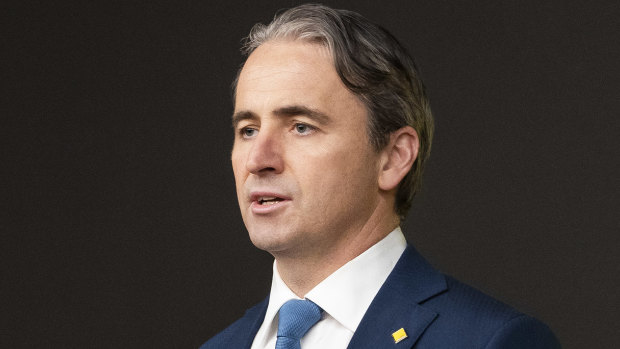Opinion
What’s driving the CBA money machine, and what would a rate cut do?
Clancy Yeates
Deputy business editorWhen the Commonwealth Bank delivers its annual results every August, it’s inevitably seen as a bellwether for Australia’s banking giants and the wider economy. This is especially the case when the economy is being clobbered by high interest rates and cost-of-living woes.
Yet despite a weak economic backdrop, CBA’s latest results show its profits have held up better than expected, even as the bank’s chief executive, Matt Comyn, acknowledged that many households are finding things tougher financially.

CBA chief executive Matt Comyn said many households were being challenged by the cost of living.Credit: Nic Long
Beneath the $9.8 billion headline cash profit – 2 per cent less than last year but more than investors had expected – a few points stood out.
First, CBA’s bottom line benefits from fewer bad debts than one would expect in these economic circumstances.
Bad debt charges are a big swing factor for banks: they are generally what cause bank boards to cut dividends, for example. But even though the economy has been soft and unemployment has risen, CBA’s expenses from soured loans were lower than many in the market had predicted.
In the year to June, CBA said expenses for impaired loans decreased by $306 million to $802 million. One reason for this was rising house prices, which allow people who are struggling to meet their loan repayments to sell their home rather than default on their mortgage – an outcome that is tough for the borrower but which shields the bank’s bottom line. CBA also pointed to lower expected losses in consumer finance – credit cards and personal loans.
Importantly, there were still signs of stress across the bank’s massive loan portfolio. In corporate lending, CBA said troublesome corporate exposures had risen by $1.1 billion in the June half because of a “small number” of businesses that were downgraded. Mortgage arrears are gradually rising, and the market expects this trend to continue. But all up, CBA’s bad loan charges were lower than bank-watchers had expected.
The other feature of CBA’s result that caught the eye of investors was the stabilisation of its net interest margin (NIM) at 1.99 per cent.
NIMs, which compare a bank’s funding costs with what it charges for loans, are a key driver of bank profitability. Margins expanded during the cycle of official interest rate rises that kicked off in May 2022 before being squeezed by mortgage competition last year.
A key reason why Reserve Bank rate rises boosted bank profit margins is that banks were quick to raise interest rates on their loans by the same amount as the Reserve but slower to pass on the increase to depositors, who typically have to jump through hoops to get the more competitive “bonus” rates of interest. Banks also benefit from higher rates because they can earn a better return on money that is effectively free because it sits in transaction accounts that pay zero or minimal interest.
Jefferies analyst Matt Wilson points out that CBA’s retail banking arm makes about 20 per cent more in net interest income from deposits than it does from home loans. “They make more money from deposits because they pay well below the cash rate on deposits,” he says.
The stabilisation in CBA’s margin is likely to be seen as good news for other banks, as will the news that Australia’s biggest bank is experiencing less bad debt pain than many expected.
But when many think CBA shares are already overpriced, another question doing the rounds is: What would a rate cut mean for the CBA profit machine?
The impact would be mixed, because lower rates would be good for banks in some ways, such as helping the housing market (good for loan growth), while giving struggling borrowers more breathing space. But overall, bank-watchers say rate cuts would slow down the CBA profit engine.
If rates were to fall, Wilson says it would be negative for banks’ bottom lines because it would compress the margin between the rates on deposits and the cash rate. “Lower rates are bad for banks,” he says.
Markets are convinced rate cuts are coming – indeed, investors are betting on Reserve Bank rate cuts this year, even though the Reserve says that’s unlikely. If those cuts arrive, it could slow (slightly) the big profits being churned out by CBA and its peers. That’s because the process of margin expansion that all banks enjoyed when the RBA was raising rates would, at least in part, go into reverse.
The Business Briefing newsletter delivers major stories, exclusive coverage and expert opinion. Sign up to get it every weekday morning.